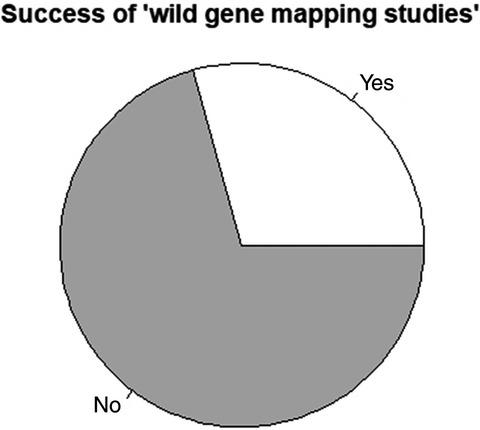当前位置:
X-MOL 学术
›
Glob. Change Biol.
›
论文详情
Our official English website, www.x-mol.net, welcomes your
feedback! (Note: you will need to create a separate account there.)
Opinion: Is gene mapping in wild populations useful for understanding and predicting adaptation to global change?
Global Change Biology ( IF 10.8 ) Pub Date : 2020-03-24 , DOI: 10.1111/gcb.15058 Phillip Gienapp 1
Global Change Biology ( IF 10.8 ) Pub Date : 2020-03-24 , DOI: 10.1111/gcb.15058 Phillip Gienapp 1
Affiliation

|
Changing environmental conditions will inevitably alter selection pressures. Over the long term, populations have to adapt to these altered conditions by evolutionary change to avoid extinction. Quantifying the 'evolutionary potential' of populations to predict whether they will be able to adapt fast enough to forecasted changes is crucial to fully assess the threat for biodiversity posed by climate change. Technological advances in sequencing and high-throughput genotyping have now made genomic studies possible in a wide range of species. Such studies, in theory, allow an unprecedented understanding of the genomics of ecologically relevant traits and thereby a detailed assessment of the population's evolutionary potential. Aimed at a wider audience than only evolutionary geneticists, this paper gives an overview of how gene mapping studies have contributed to our understanding and prediction of evolutionary adaptations to climate change, identifies potential reasons why their contribution to understanding adaptation to climate change may remain limited, and highlights approaches to study and predict climate change adaptation that may be more promising, at least in the medium term.
中文翻译:

意见:野生种群中的基因作图对理解和预测对全球变化的适应性有用吗?
不断变化的环境条件将不可避免地改变选择压力。从长远来看,种群必须通过进化变化适应这些变化的条件,以避免灭绝。量化人群的“进化潜力”以预测他们是否能够足够快地适应预测的变化,这对于全面评估气候变化对生物多样性的威胁至关重要。测序和高通量基因分型的技术进步现已使广泛种类的基因组研究成为可能。从理论上讲,此类研究使人们对生态相关性状的基因组学有了空前的了解,从而可以对种群的进化潜力进行详细的评估。不仅针对进化遗传学家,而且针对更广泛的受众,
更新日期:2020-04-22
中文翻译:

意见:野生种群中的基因作图对理解和预测对全球变化的适应性有用吗?
不断变化的环境条件将不可避免地改变选择压力。从长远来看,种群必须通过进化变化适应这些变化的条件,以避免灭绝。量化人群的“进化潜力”以预测他们是否能够足够快地适应预测的变化,这对于全面评估气候变化对生物多样性的威胁至关重要。测序和高通量基因分型的技术进步现已使广泛种类的基因组研究成为可能。从理论上讲,此类研究使人们对生态相关性状的基因组学有了空前的了解,从而可以对种群的进化潜力进行详细的评估。不仅针对进化遗传学家,而且针对更广泛的受众,











































 京公网安备 11010802027423号
京公网安备 11010802027423号